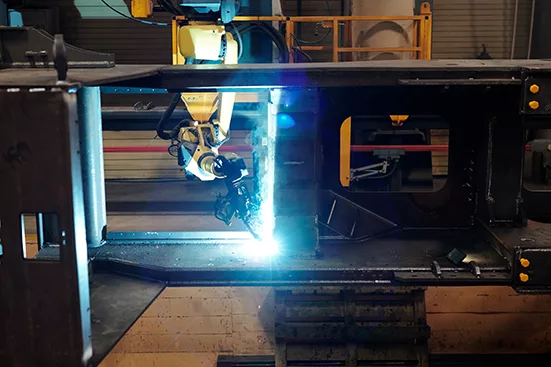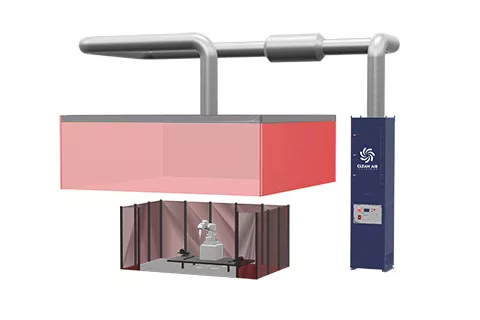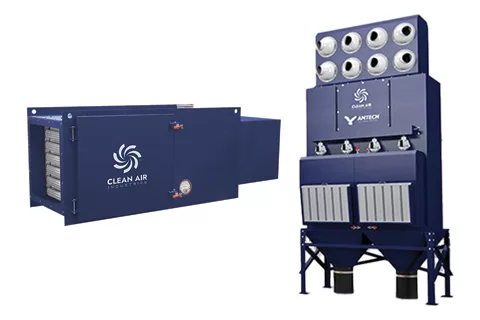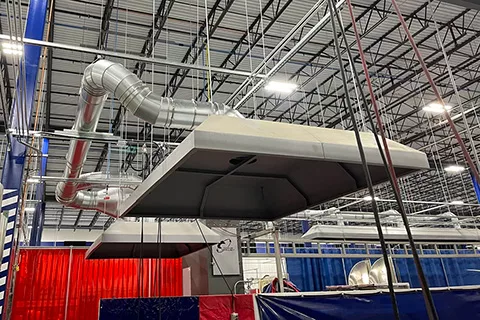Robotic Welding
What is Robotic Welding?
 Robotic welding refers to the use of automated robotic systems to perform welding tasks in manufacturing processes. It involves the use of programmable robots equipped with welding equipment to join materials together using heat and pressure.
Robotic welding refers to the use of automated robotic systems to perform welding tasks in manufacturing processes. It involves the use of programmable robots equipped with welding equipment to join materials together using heat and pressure.
The process of robotic welding typically involves the following steps:
- Programming: The robot’s movements and welding parameters are programmed into a computer system. This includes specifying the welding path, speed, and other variables.
- Material Preparation: The materials to be welded are prepared by cleaning, positioning, and clamping them in place.
- Welding Operation: The robot performs the welding operation by precisely controlling the movement of the welding torch along the specified path. It applies heat to melt the materials and filler material, if needed, to create a strong joint.
- Quality Control: Robotic welding systems often include sensors and cameras to monitor the welding process and ensure the quality of the welds. They can detect defects or variations and make adjustments in real-time.
Robotic welding offers several advantages over traditional manual welding, including increased efficiency, higher precision, and improved consistency. It can significantly enhance productivity by reducing cycle times and increasing the number of welds performed per hour. The use of robots also improves the quality of welds since they can consistently reproduce the programmed movements and welding parameters.
Impact on Indoor Air Quality and What You Can Do
In terms of air quality within a manufacturing facility, robotic welding can have both positive and negative impacts. Some key factors to consider include:
- Emissions: Robotic welding generates fumes and gases during the welding process, primarily from the melting of metals and the consumables used, such as welding wire and shielding gases. These emissions can contribute to air pollution within the facility if not properly managed.
- Worker Exposure: Robotic welding can reduce direct exposure to welding fumes for workers since they are not directly involved in the welding process. However, workers still need to be cautious when working in the vicinity of robotic welding cells to avoid exposure to emissions and maintain a safe working environment.
- Occupational Health and Safety: Implementing proper safety measures, such as using personal protective equipment (PPE) like respirators, can further protect workers from potential health risks associated with welding emissions.
- Ventilation and Filtration: To mitigate the impact of welding emissions, manufacturers typically implement proper ventilation and filtration systems. Local exhaust hoods or enclosures can be used to capture and remove welding fumes and gases at the source. Air filtration systems, such as high-efficiency particulate air (HEPA) filters or electrostatic precipitators, can help remove contaminants from the air before recirculating it within the facility.
- Proper Training and Awareness: Educating workers about the risks associated with welding fumes and promoting safe work practices.
To minimize the impact on indoor air quality, it is important for manufacturers to adhere to relevant regulations and guidelines regarding emissions control and worker safety. Regular maintenance of robotic welding systems, including cleaning filters and replacing consumables, is also crucial to ensure efficient operation and minimize emissions.
Clean Air Solutions for Robotic Welding

Robotic Welding Cells
Up to 6,000+ CFM Airflow
The Liberty WeldCell Series is your compact robotic weld cell solution with some of the most advanced controls available.
Learn More
Ambient Air Cleaners
Up to 6,000 CFM Airflow
Effective weld fume extraction and dust collection for your entire facility, using little to no floor space.
Learn More
Custom Extraction Hoods
Various Configurations
Customized extraction hoods built to your specifications. Can be suspended or mounted on legs.
Learn More